The world of avian companions offers some of the most visually spectacular pets available for dedicated enthusiasts. Exotic birds with vibrant plumage bring not only dazzling colors to your home but also intelligence, personality, and in many cases, impressive vocal abilities. While these feathered jewels can transform a living space into a tropical paradise, potential owners should understand that colorful exotic birds often require specialized care, significant time commitment, and proper environmental considerations. This comprehensive guide explores the most visually stunning exotic birds that make remarkable companions, highlighting their unique characteristics, care requirements, and special considerations for those considering these rainbow-hued avian friends.
The Magnificent Scarlet Macaw

The Scarlet Macaw stands as one of the most recognizable and breathtaking birds in the avian world, sporting a dramatic combination of bright red, yellow, and blue plumage that seems almost too vibrant to be natural. These magnificent parrots can reach lengths of up to 33 inches from beak to tail tip, making them an imposing and spectacular presence in any home. Their intelligence rivals that of a young child, allowing them to learn numerous words, solve puzzles, and form deep bonds with their human caretakers over their impressively long lifespan of 50+ years. Potential owners should note that Scarlet Macaws require spacious environments, frequent social interaction, and mentally stimulating activities to prevent behavioral issues that can develop when these intelligent birds become bored or isolated.
The Rainbow-Hued Sun Conure
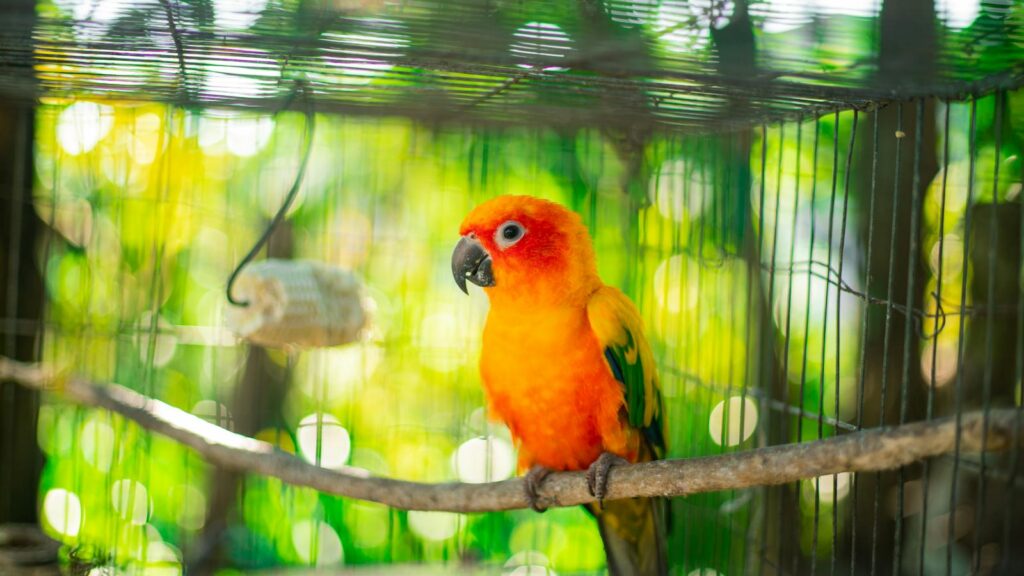
Sun Conures offer a perfect balance of manageable size and spectacular coloration, with their plumage featuring a stunning gradient that transitions from golden-yellow on their heads to orange on their chests and green on their wings and tails. Despite their medium size (about 12 inches long), these birds have outsized personalities, forming intense bonds with their owners and displaying playful, affectionate behavior that endears them to many bird enthusiasts. Their vocalizations, while not as varied as larger parrots, can be quite loud – a consideration for apartment dwellers or those with noise-sensitive neighbors. Sun Conures typically live 15-25 years with proper care, making them a significant long-term commitment for those enchanted by their vibrant appearance and charming demeanor.
The Elegant Blue-and-Gold Macaw
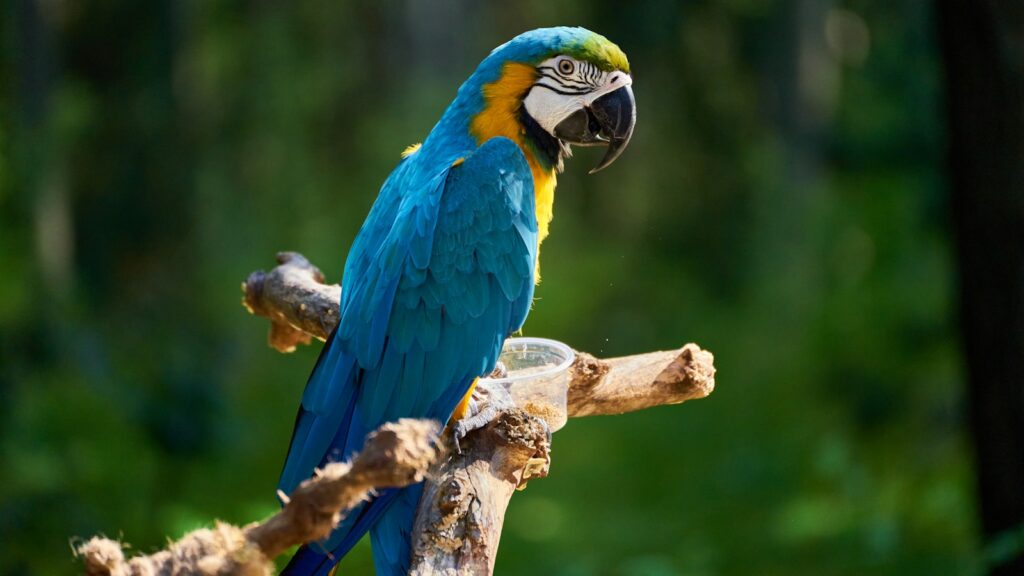
Blue-and-Gold Macaws present a striking contrast of cobalt blue upper bodies and golden-yellow underparts, creating one of the most recognized color patterns in the parrot world. These gentle giants typically measure around 33-36 inches in length, requiring substantial cage space and regular opportunities for exercise and flight. Despite their imposing size, Blue-and-Golds are known for their gentle, affectionate personalities, often described as more even-tempered than their Scarlet cousins. Their impressive vocal abilities include not only mimicking human speech but also understanding contextual usage of certain words and phrases, demonstrating their remarkable intelligence and adaptability. With proper care, these magnificent birds can live 60-70 years, potentially becoming multi-generational family members, requiring thoughtful long-term planning.
The Jewel-Like Gouldian Finch
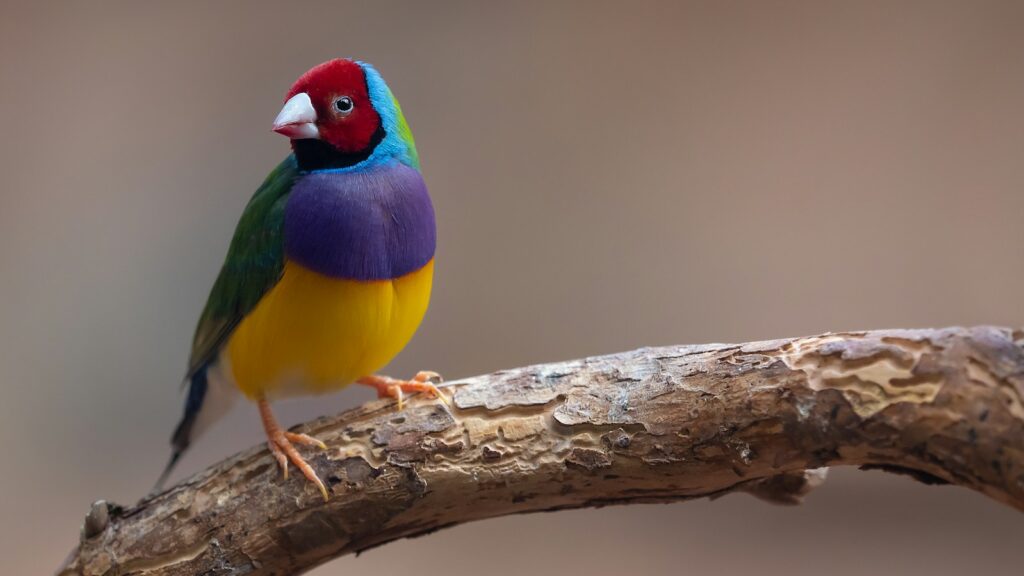
Gouldian Finches offer an extraordinary palette of colors in a tiny package, with their plumage featuring vibrant combinations of green, purple, yellow, red, and black, which seem almost artificially enhanced. Unlike larger parrots, these finches don’t talk or require extensive handling, making them ideal for bird enthusiasts who prefer to admire their pets’ beauty without the intensive interaction larger species demand. They thrive in small flocks, creating a living rainbow when kept in spacious aviaries where their social dynamics and natural behaviors can be observed. Their delicate nature requires consistent temperature control, specialized seed mixtures, and meticulous cleanliness, making them somewhat challenging, despite their small size and relatively short 5- to 8-year lifespan.
The Vibrant Rainbow Lorikeet
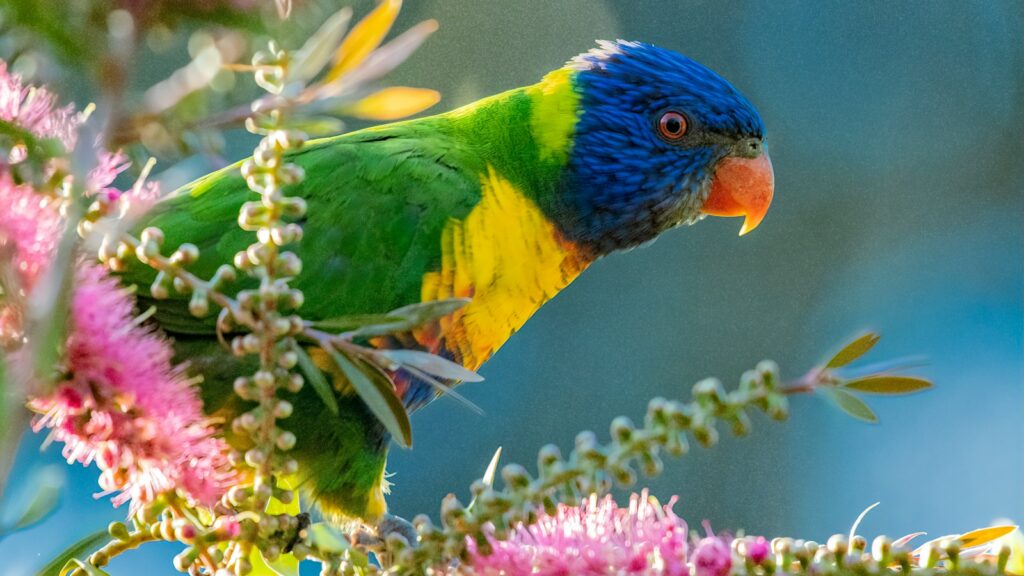
Rainbow Lorikeets are aptly named for their spectacular multi-colored appearance, featuring electric blue heads, bright green wings, orange-yellow breasts, and deep red beaks and eyes. Unlike seed-eating parrots, these specialized nectarivores require a liquid honey-based diet supplemented with fruits and special lorikeet nectar, creating unique care challenges but also reducing the dust common with seed-eaters. Their playful, acrobatic nature makes them endlessly entertaining, as they swing, hang upside down, and perform gymnastics that showcase their remarkable dexterity and energy. Rainbow Lorikeets can develop impressive vocabularies despite their medium size, though many owners find their natural vocalizations – a mix of chattering, whistling, and chirping – charming enough without speech training. Their specialized digestive systems result in liquid droppings that require more frequent cleaning than other birds, a consideration for those attracted to their unparalleled coloration.
The Charming Eclectus Parrot
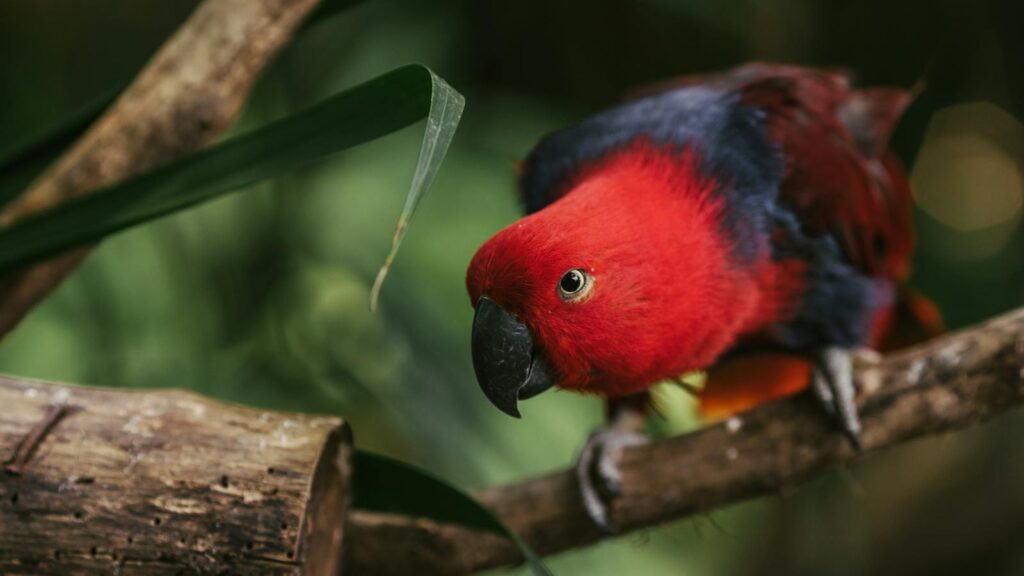
Eclectus Parrots present one of the most dramatic examples of sexual dimorphism in the bird world, with males displaying brilliant emerald green plumage and females showcasing deep red and purple coloration – so different that they were once thought to be separate species. Their unique physical characteristics extend beyond color, including their distinctive “candy corn” beaks and unusually short, hair-like feathers that give them a smooth, almost polished appearance, unlike the layered look of other parrots. Eclectus Parrots require specialized diets rich in fruits and vegetables, as their longer digestive tracts and different nutritional needs set them apart from many other parrot species. Their calm, contemplative personalities make them excellent companions for owners seeking an intelligent, colorful bird without the extreme noise levels or hyperactivity of some other exotic species.
The Diminutive Budgerigar (Budgie)
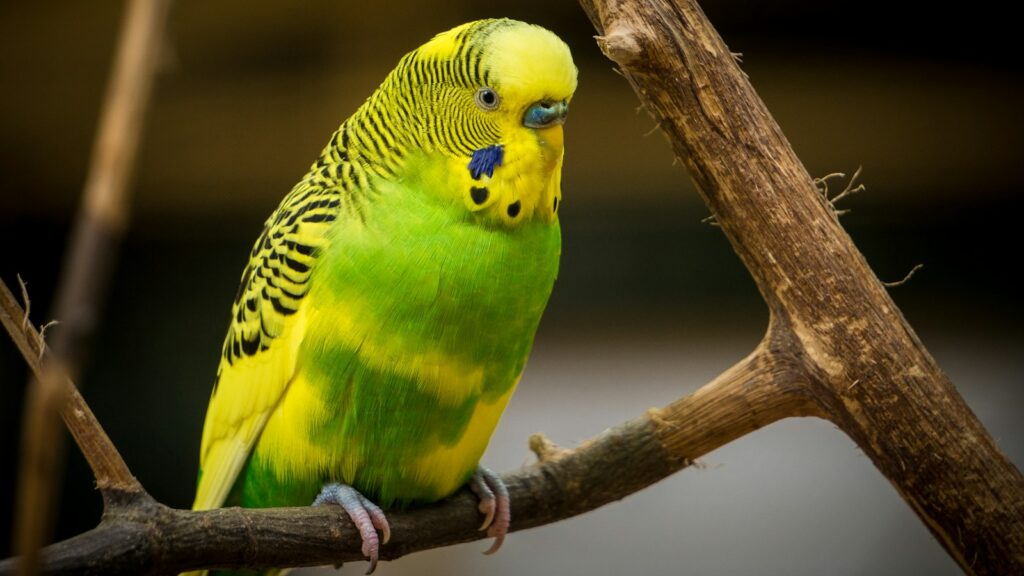
Budgerigars may be small in stature, but these affordable and accessible birds offer spectacular color variations through decades of selective breeding, including vibrant blues, greens, yellows, and even rare violet variations. Their compact size (7-8 inches) makes them suitable for smaller living spaces, while their cheerful chirping provides pleasant background sound without the ear-splitting potential of larger parrots. Despite their modest price and widespread availability, budgies can develop impressive vocabularies of hundreds of words when patiently trained, challenging the notion that only expensive exotic birds can learn to speak. These social creatures benefit greatly from companionship – either human interaction or, ideally, another budgie friend – making them suitable for bird enthusiasts who can provide daily attention or are willing to maintain a small flock.
The Spectacular Green-Winged Macaw

Green-Winged Macaws command attention with their predominant deep red plumage accented by bright green wing coverts and turquoise tail feathers, creating a regal appearance that many consider the most beautiful among the macaw family. These gentle giants typically reach 3-4 feet in length from beak to tail tip, making them one of the largest parrot species commonly kept as pets and necessitating exceptionally spacious accommodations. Their temperament tends toward the calmer end of the macaw spectrum, with many owners describing them as more reserved and less prone to screaming than their Blue-and-Gold or Scarlet relatives. Green-Winged Macaws form extraordinarily strong bonds with their caretakers, demonstrating affection through cuddling, preening, and seeking physical contact, though this attachment can sometimes lead to jealousy toward other family members. Their substantial size correlates with substantial strength, requiring experienced handlers who understand parrot body language and can provide consistent, positive-reinforcement training.
The Iridescent Indian Ringneck Parakeet
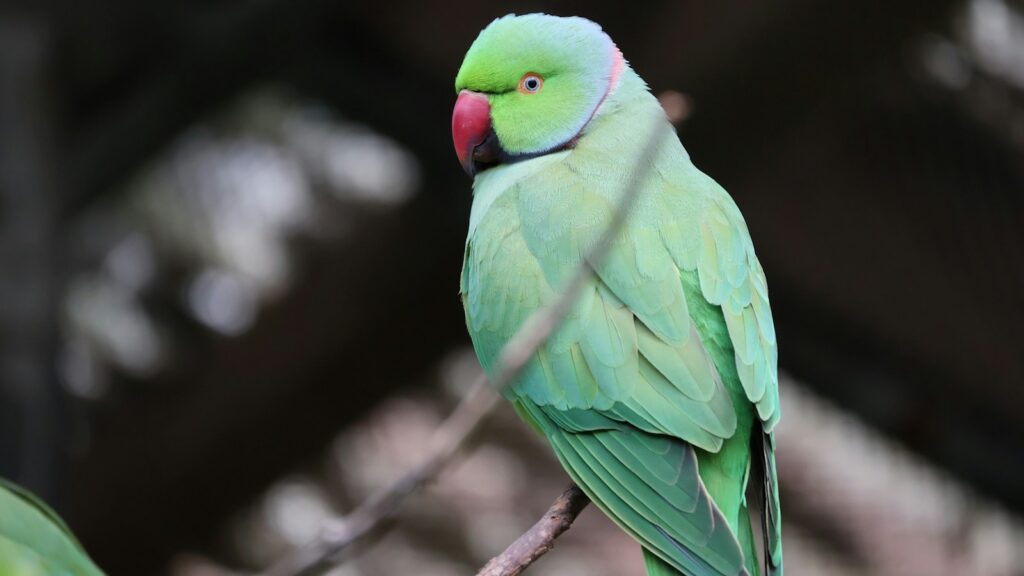
Indian Ringneck Parakeets display subtle yet captivating coloration, with their standard lime-green bodies complemented by breeding mutations producing stunning blue, yellow, violet, and even white variations. Male Ringnecks develop their namesake black neck ring at maturity, adding a distinctive accent to their sleek, long-tailed silhouette that reaches about 16 inches in length. These birds are renowned for their exceptional talking ability, with many individuals developing vocabularies of hundreds of words and speaking with remarkable clarity that rivals much larger parrot species. Their independent nature makes them less demanding of constant attention compared to some other parrots, though this trait requires early socialization to prevent them from becoming aloof or nippy with maturity.
The Kaleidoscopic Lovebird

Lovebirds pack extraordinary color into their compact 5-7 inch frames, with species like the Peach-faced Lovebird displaying vibrant green bodies complemented by rosy-pink faces and blue rumps. Their common name derives from their strong pair bonds and affectionate behavior toward their mates, though this doesn’t necessarily translate to cuddliness with humans unless hand-raised from a young age. Despite their small size, Lovebirds possess bold personalities and substantial energy levels, requiring stimulating toys, regular out-of-cage time, and interactive play to channel their intelligence appropriately. Their relatively modest space requirements and manageable 15-20 year lifespan make them accessible to bird enthusiasts with limited room who still desire a colorful, personable companion.
The Dazzling Turquoise Parrot
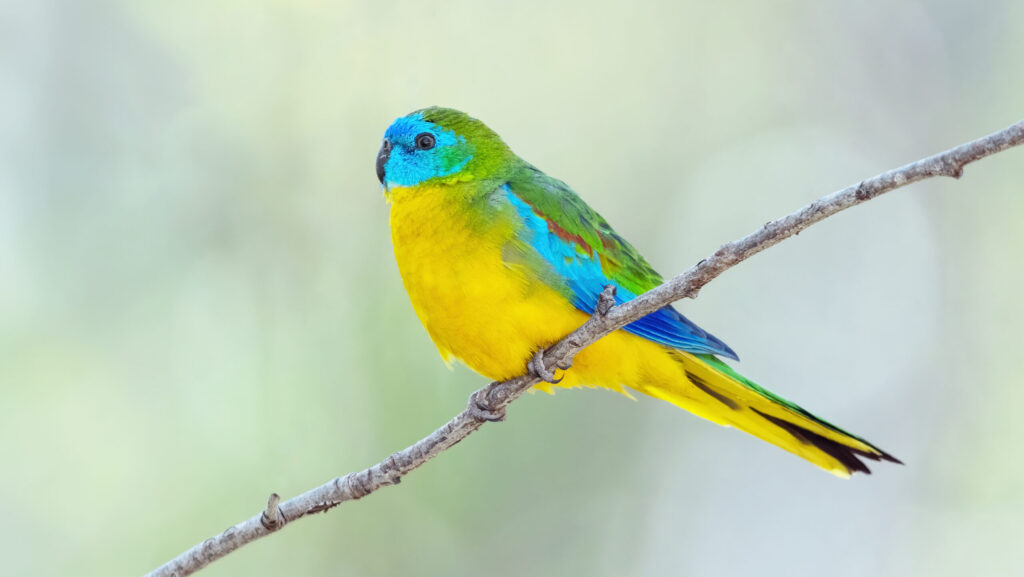
Turquoise Parrots present subtle elegance, rather than flamboyant coloration, with their namesake turquoise-blue facial patches complementing olive-green bodies and bright red shoulder patches on males. These Australian natives remain relatively uncommon in the pet trade, making them prized possessions for aviculturists seeking something beyond typical companion parrot species. Their soft, melodious calls provide a pleasant alternative to the louder vocalizations of many popular parrots, making them suitable for settings where noise must be considered. Turquoise Parrots retain more of their natural behaviors than highly domesticated species, displaying fascinating foraging, flight patterns, and courtship behaviors when kept in appropriate aviaries with sufficient space and environmental enrichment.
The Crimson Rosella’s Fiery Beauty
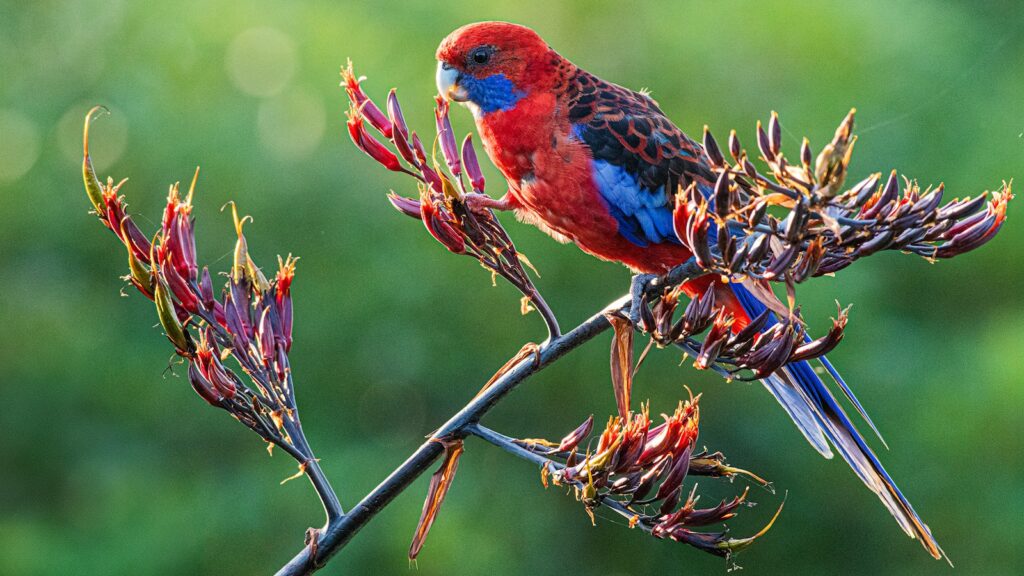
Crimson Rosellas command attention with their predominantly scarlet red plumage accented by patches of royal blue on their cheeks, wings, and tail, creating a striking contrast that seems almost artificially enhanced. These Australian natives maintain many of their wild instincts and independent nature, making them somewhat less hands-on than other companion parrots but fascinating to observe as they display natural behaviors. Their melodious whistles and warbling calls provide pleasant ambient sound without the extreme volume some parrot enthusiasts find challenging in macaws or cockatoos. Crimson Rosellas require spacious enclosures that accommodate their active nature and strong flying abilities, ideally including outdoor aviaries where their brilliant coloration can be appreciated in natural sunlight.
Essential Considerations Before Adopting Colorful Exotic Birds
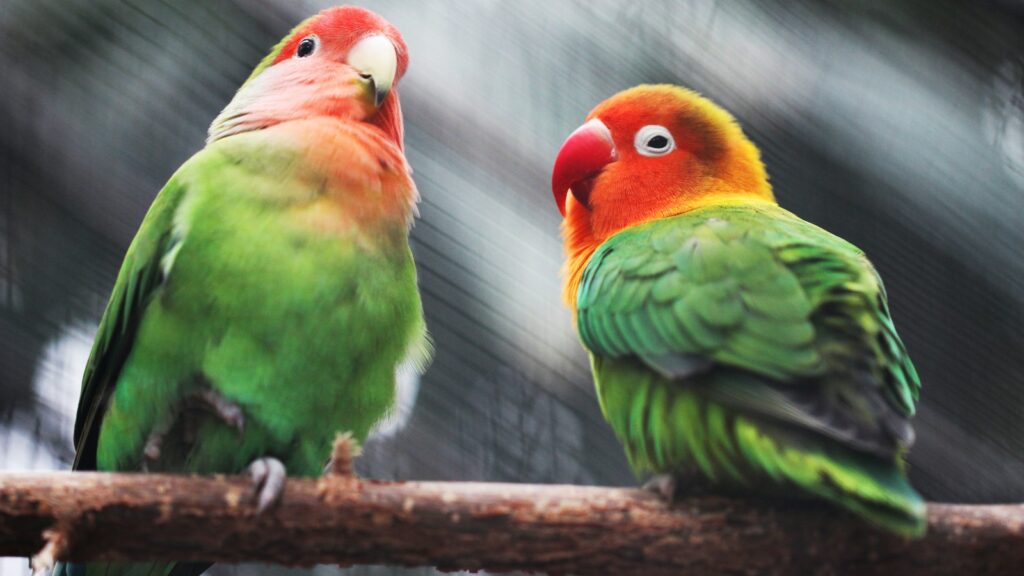
Colorful exotic birds require significant long-term commitments, with many larger species living 50+ years, and even smaller birds typically surviving 15-20 years with proper care. Their environmental needs go beyond basic caging, requiring specific temperature ranges, humidity levels, and protection from common household dangers like non-stick cookware fumes, scented products, and drafts that can prove fatal to their sensitive respiratory systems. Financial considerations extend far beyond initial purchase prices, encompassing specialized diets, veterinary care from avian specialists, appropriate housing, toys, and potential home modifications to create safe, enriching environments. Potential owners should thoroughly research species-specific behaviors, as colorful plumage often accompanies strong personalities, specialized dietary requirements, and significant noise levels that might not align with every lifestyle or living situation.
The extraordinary world of colorful exotic birds offers unparalleled beauty, intelligence, and companionship for those prepared to meet their specialized needs. From the magnificent scarlet macaw to the diminutive yet vibrant budgerigar, each species brings its unique combination of visual splendor and avian personality to the homes of dedicated bird enthusiasts. While these feathered jewels require significant commitments of time, resources, and emotional energy, many owners find the relationships they develop with these spectacular creatures among the most rewarding experiences of their lives. By approaching exotic bird ownership with thorough research, realistic expectations, and a commitment to providing lifelong care, the right owners can enjoy decades of companionship with some of nature’s most spectacular living creations.

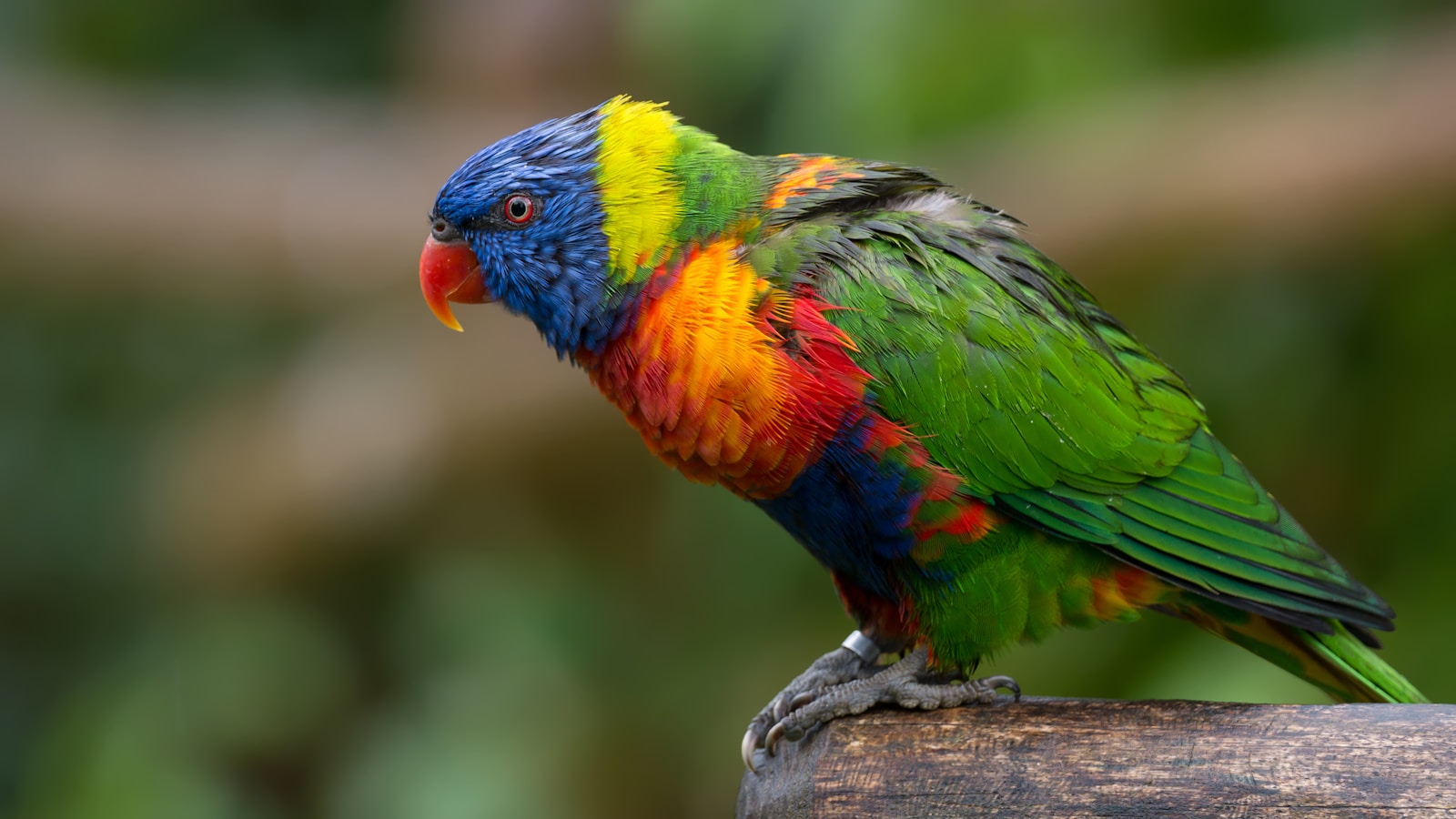

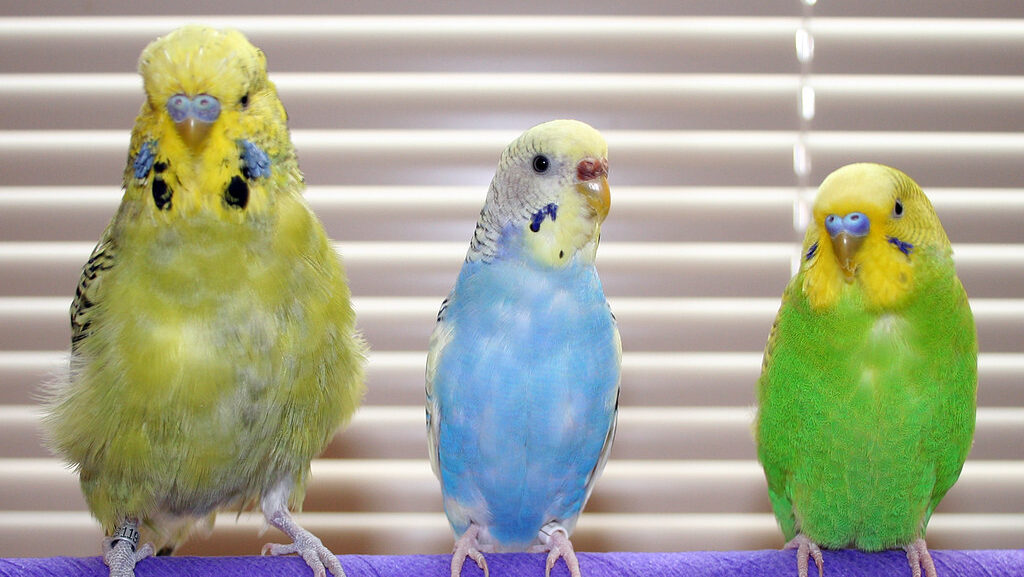

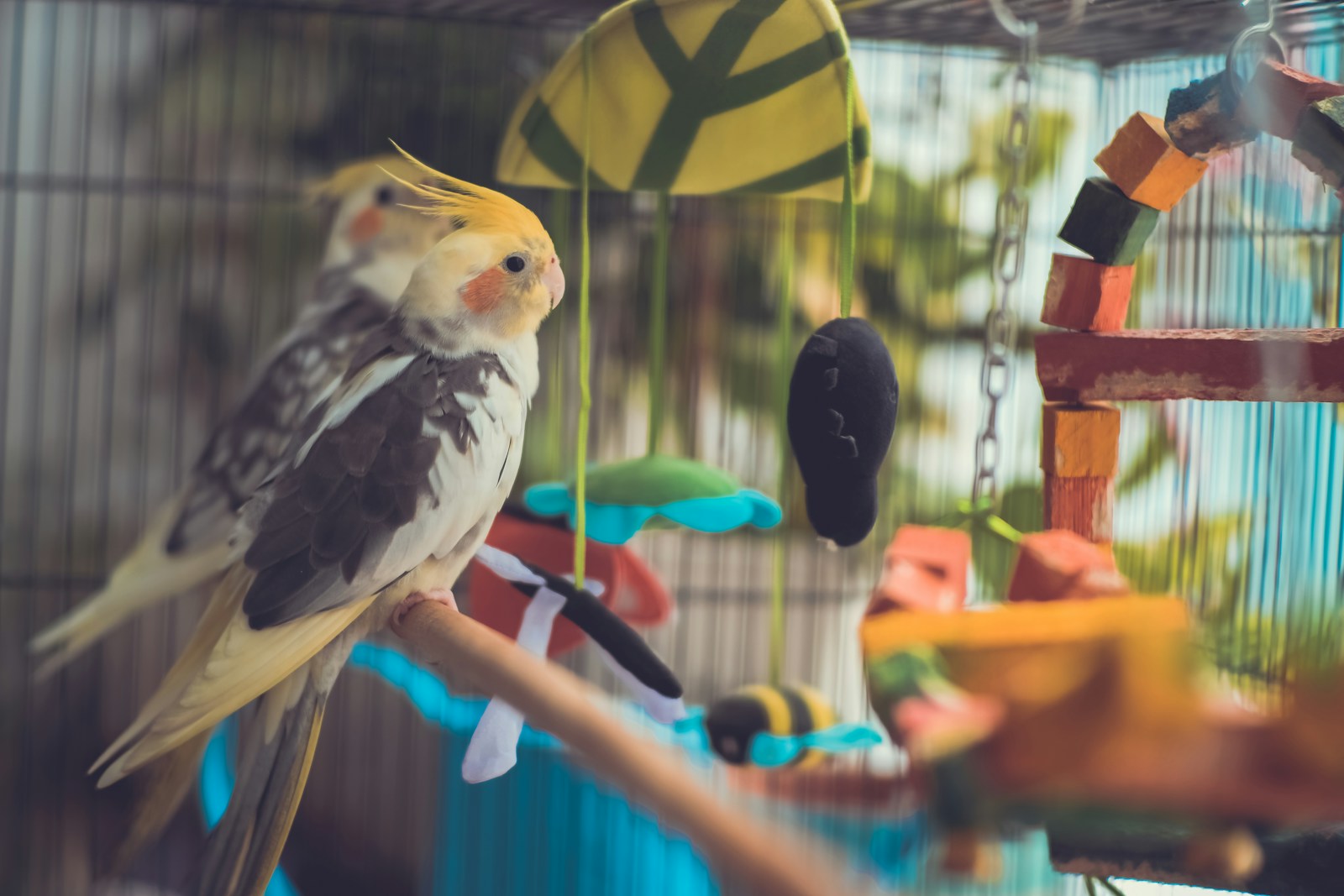
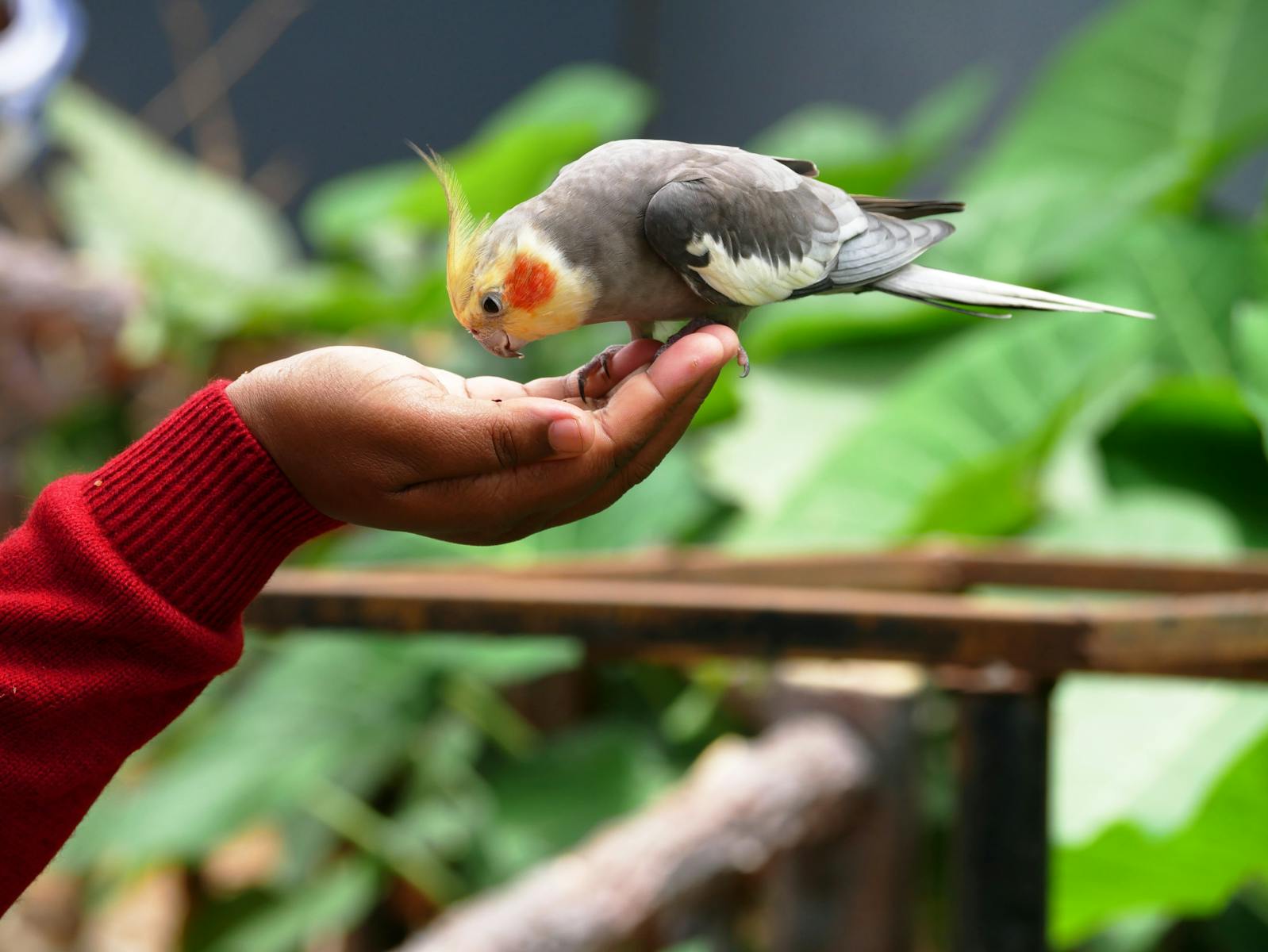
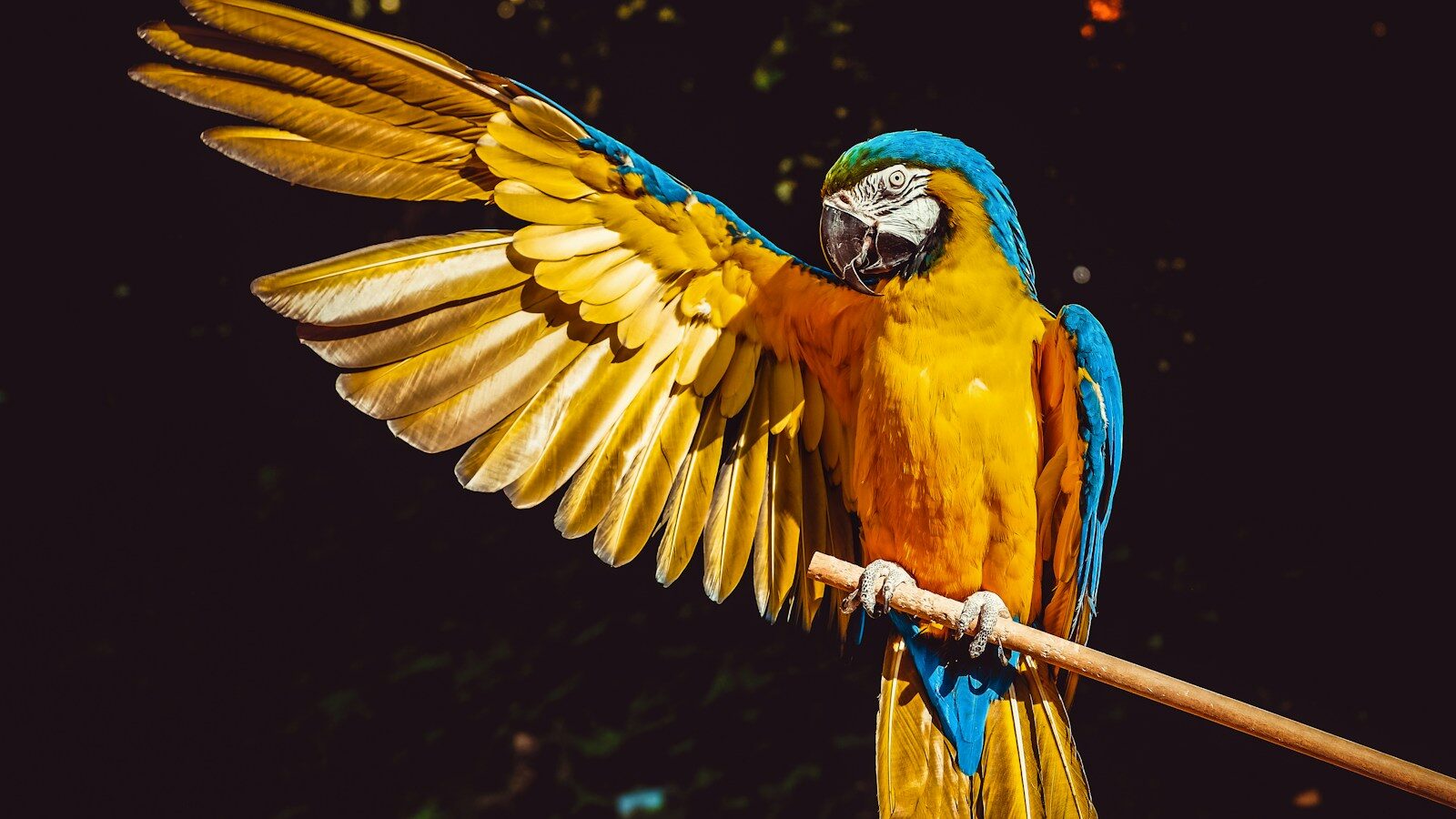

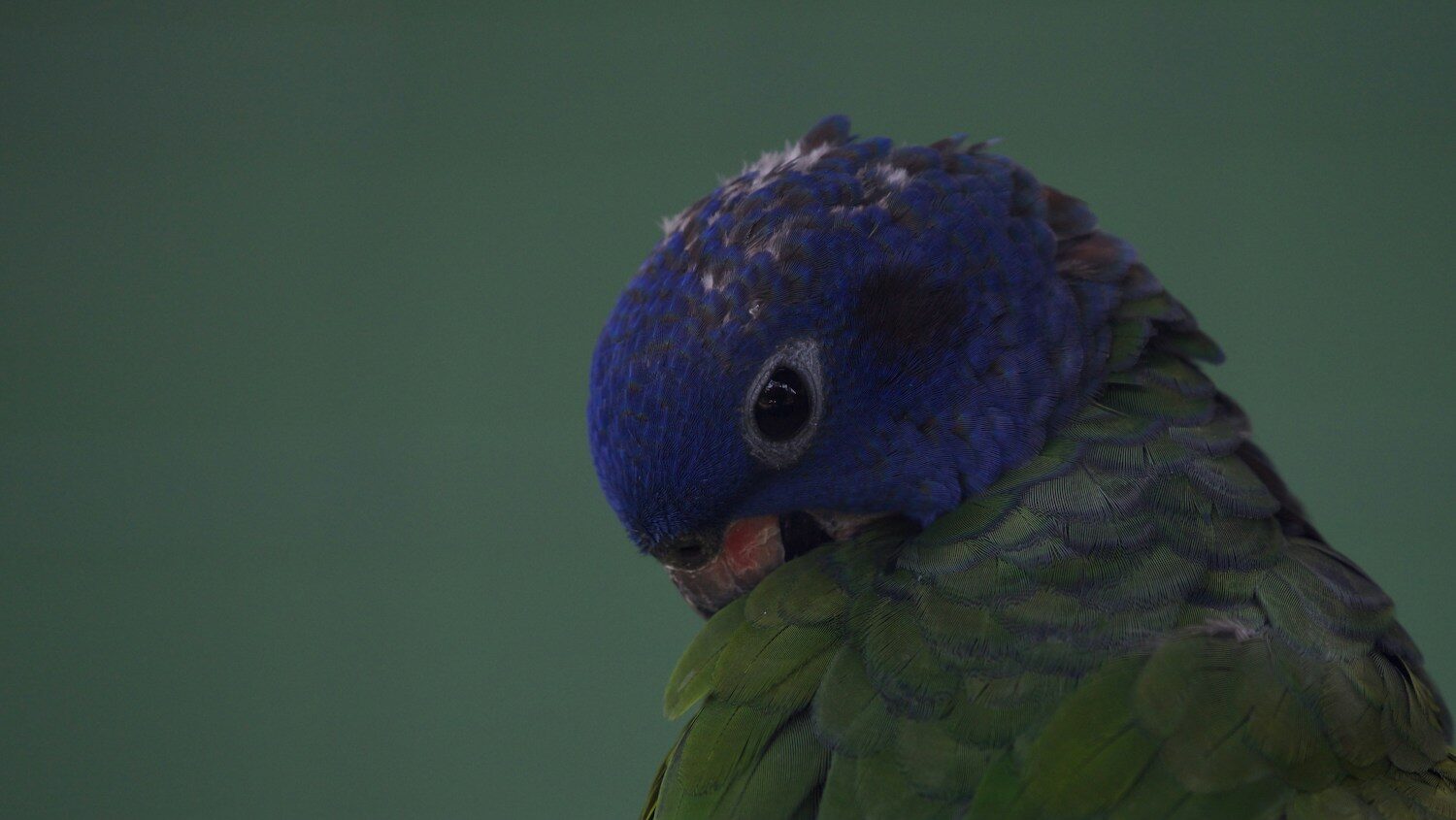

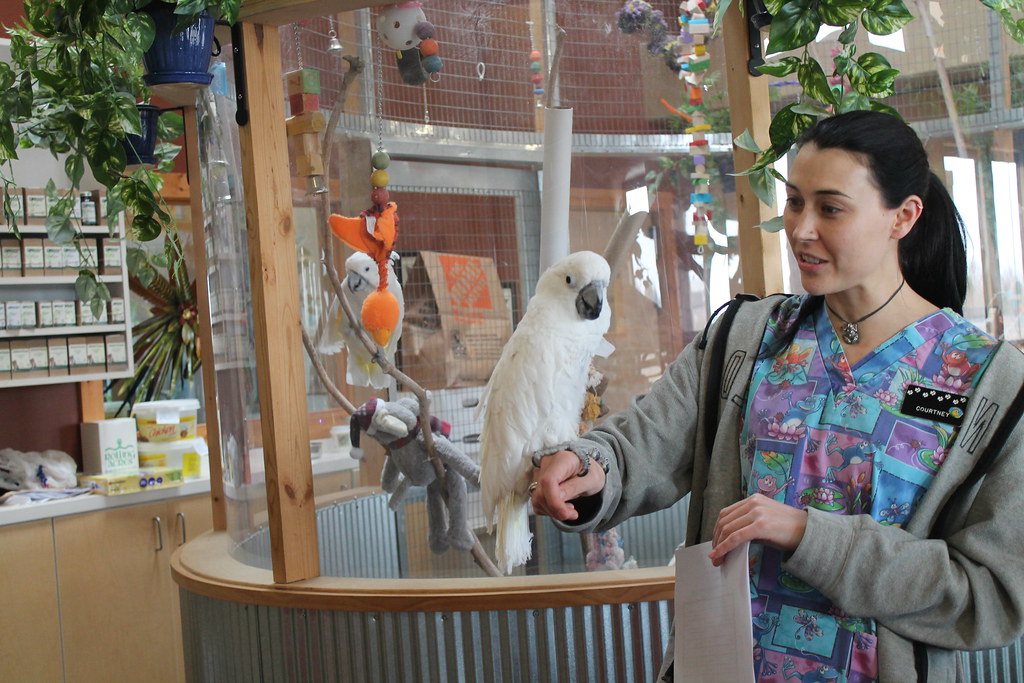




Leave a Reply